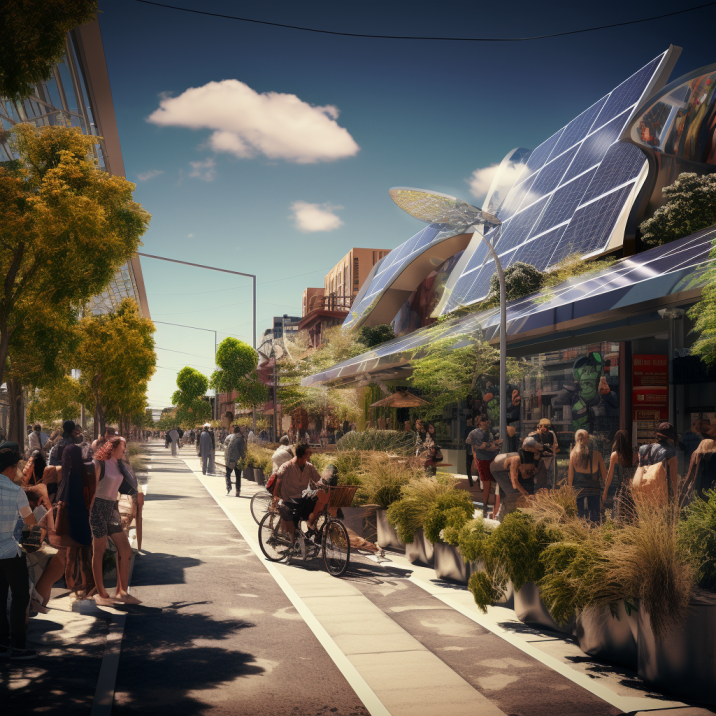The Melbourne Doughnut
Explore how well Melbourne is tracking as a place that supports people and planet to thrive.
Air Pollution
Micro-particles, or aerosols, emitted into the air – such as smoke, dust and pollutant gases – can damage living organisms. Furthermore, they interact with water vapour in the air and so affect cloud formation. When emitted in large volumes, these aerosols can significantly alter regional rainfall patterns, including shifting the timing and location of monsoon rains in tropical regions.
Contributors to Air Pollution
Aerosols are from direct or primary emissions and as a result of indirect or secondary emissions from other sources. Aerosols are the basis for air pollution which can be harmful to human health. They impact climate change with both warming and cooling impacts. Primary Aerosol Emissions include:
- Sea salt
- Dust
- Black carbon, from fire or fossil fuel combustion (such as diesel engines)
- Ammonia, from fertiliser use in agriculture
- Nitrogen oxides, primarily from motor vehicles but also from volcanic activity and fires
- Organic carbon, from combustion
- Sulphur dioxide, primarily from burning coal and oil, but also from volcanic activity
Planetary Quotas for Greater Melbourne
Each dimension of the Ecological Ceiling is measured using per-capita Planetary Quotas for Greater Melbourne.
Aerosol Emissions
Small particles in the air are causing poor air quality and impacting health outcomes
What we're measuring
Impact on air quality of the emission of aerosols and precursor gases (measured in Aerosol Optical Depth equivalent)
- 2030 Target
- Under 5.7e-5 AOD equivalent per year
- Now
- 1.4e-5 AOD equivalent per year
Placing Air Pollution in the system
Global to local connections
Aerosol Emissions contribute to climate change and associated weather patterns globally while harming health closer to the places where they occur. In Greater Melbourne, poor air quality became especially apparent during the Black Summer bushfires. Improving air quality in Greater Melbourne can happen through:
- Accelerating our transition to renewable energy sources, particularly for transport and industry
- Planting trees to capture aerosols
- Avoiding harmful activities that release aerosols
Learn more
How was this dimension developed?
The Air Pollution dimension of the Greater Melbourne City Portrait has been developed in collaboration with Open Corridor with research support from the University of Melbourne. The assessment of Melbourne's environmental footprint applies a Planetary Accounting approach. A detailed description of the City Portrait methodology is outlined in the About section of the website.
Where can I access the data?
Data for Air Pollution, along with the other Ecological Ceiling dimensions are available in the Ecological Ceiling Dataset.
For Social Foundation dimensions, see the Social Foundations Dataset.
Where can I find more information on Air Pollution in a regenerative Melbourne?
The City Portrait is informed by extensive research and resources on Doughnut Economics and related frameworks, as well as sector-specific research associated with each dimension. More detailed research that has informed the Air Pollution dimension is available to explore via Altiorem's library.
How can I get involved?
To get involved with ongoing development of the City Portrait or learn more about Regen Melbourne, email alison@regen.melbourne


